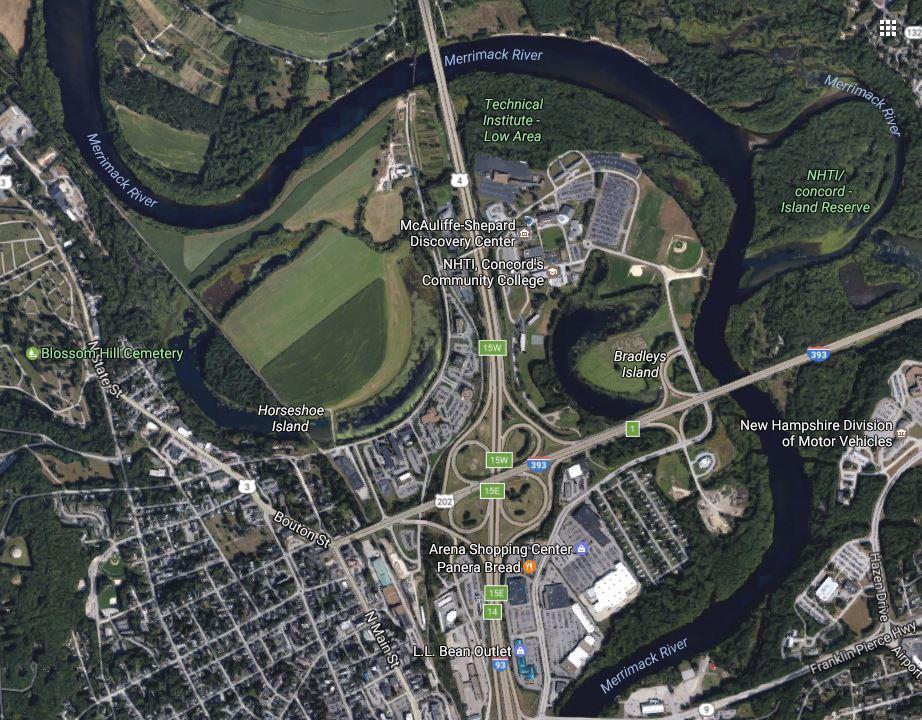Something Wild premiers new "Wild Neighborhoods" feature
- Tags:
- Clean Water,
- Something Wild

Horseshoe Pond and NHTI Island Reserve adjacent to the Forest Society's Merrimack River floodplain are oxbows in Concord.
So the thing about “nature shows” - even this one - is that we tend to talk about plant and animal species in pretty independent terms. "The red-tailed hawk eats this, sounds like that, does this in the winter…" But as we’ve tried to explain over the years (here at Something Wild) the hawk is just one resident in complex ecological puzzle; she interacts with other animals and plants in the neighborhood.
So today we're looking not at a single species, but rather at a single neighborhood and the complexities that make it up. Cleverly, we've titled this periodic series “NH’s Wild Neighborhoods,” and we'll take a quick tour of natural communities in the state. We'll be using as our primary text The Nature of NH by Dan Spurduto and Ben Kimball. Their comprehensive tome identifies nearly 200 distinct habitat types in this granite state of ours.
Some of these are familiar, like the cattail marsh or the inter tidal rocky shore. But others are far from household names, like the circum-neutral calcareous flark. And each habitat hosts plants and animals that are either unique or uniquely suited to survive in these habitats. Like the rare moths of the Ossippee pine barrens. These habitats are defined by characteristic geology, soils and sunlight, by water and wind exposure, and by elevation. We're kicking this series off with an easy one: the Oxbow.
So a quick geology lesson, first. When the glacier receded from New Hampshire, it left behind these enormous, long and skinny lakes. Over the millennia sediment built up at the bottom of these lakes. Eventually these lakes drained, leaving behind a broad, wide, sandy lake bed – made up of that sediment – with a river in it. NH's rivers carve their way through those soft materials, frequently changing course. And as that happens, it short cuts bends bends in the river. Leaving behind a stranded pool of water, shaped suspiciously like the U-shaped collar of an ox yoke. You’ll always find Oxbows right next to the river, because they were the river!
It’s well documented that river sediment is among the most fertile soil on the planet, and there are a bunch of plants that take advantage of that soil, and the proximity to water, like lilypads and purple pickerel weed. You’ll often find sycamore trees, brown ash, and green ash growing at the waters edge.
Oxbows are also great for amphibians, especially wood frogs and spotted salamanders, which migrate to oxbows as the spring thaw gets underway. Those amphibians are fodder for birds like the hooded mergansers and green herons. Between these and the fish in the water the oxbows provide plenty of food for the chicks, and the legions of shrubs mask nesting sites well. And prey species attract predators, so you’re likely to see a mink patrolling the edges of an oxbow.
Oxbows are busy natural neighborhoods, though we oft overlook them driving back and forth to work, or school. They occupy such a small percentage of the landscape, but make an enormous contribution to habitat diversity that is a key component to biological diversity. And biodiversity is what's so special about our state's outstanding natural heritage.
